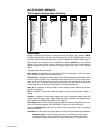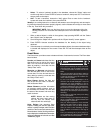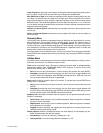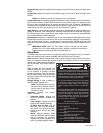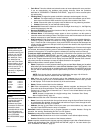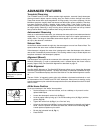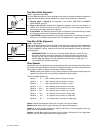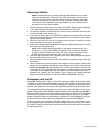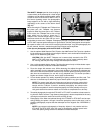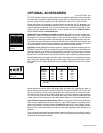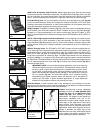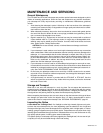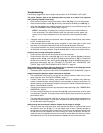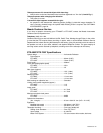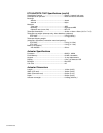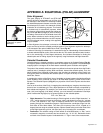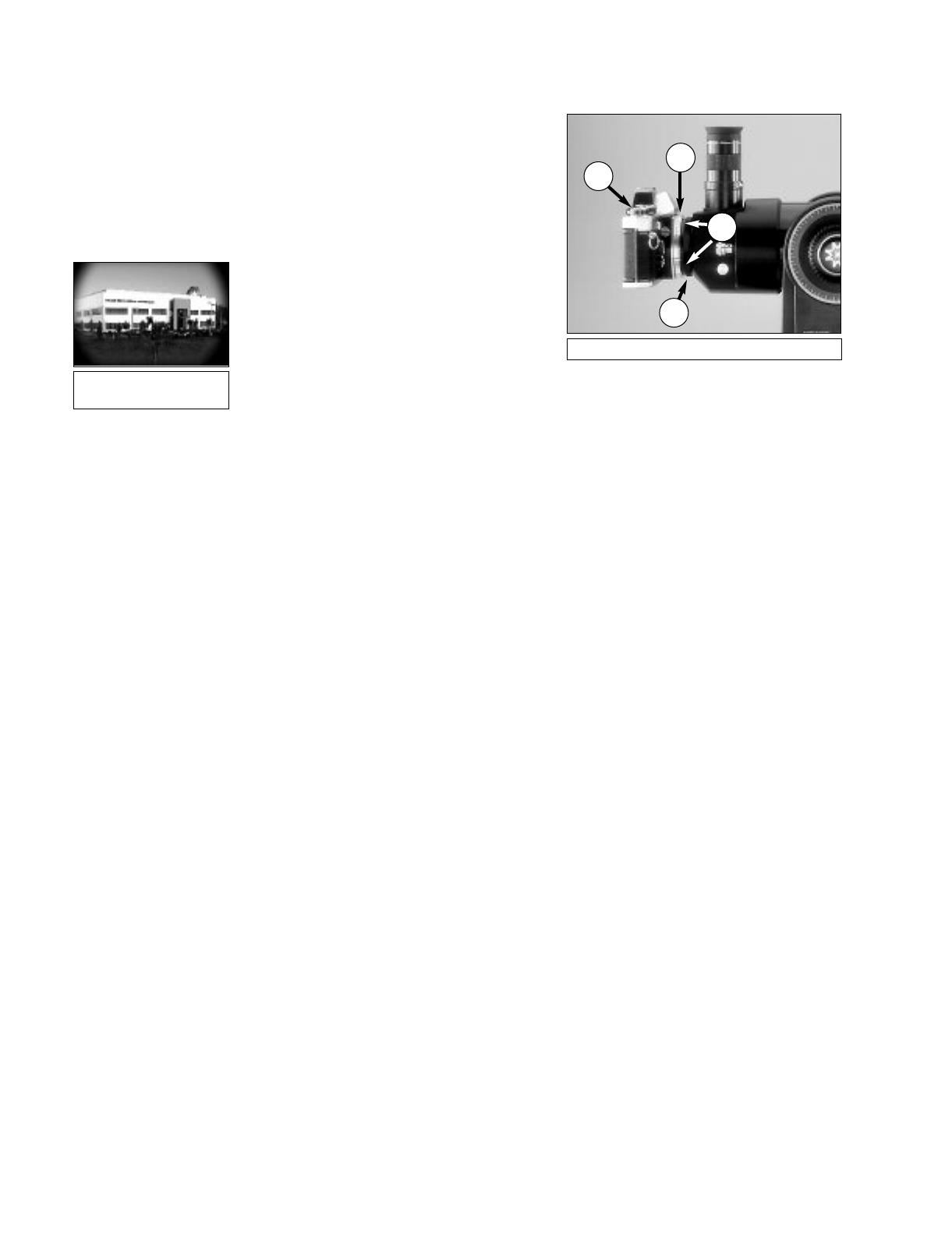
The #64ST T–Adapter permits close-coupling of
a camera body to the telescope at a focal length
of 350mm and an effective photographic speed
of f/5.8 for the ETX-60 and f/5 for the ETX-70. In
this format vignetting occurs: the photographic
image appears on film with a slight darkening
(vignetting) at the corners of the 35mm frame
(
Fig. 16).
When removing the T-Adapter and T-Mount from
the photo port, the T-Adapter may become
torqued to either the photo port or the T-Mount.
If this occurs, the T-Adapter has a slot on both
sides which may be used to loosen the T-
Adapter. Place a metal straight edge, or similar
instrument across the two slots and turn coun-
terclockwise to remove the T-Adapter. Photography through a long lens such as the ETX-60AT
or ETX-70AT requires special technique for good results, and the photographer should proba-
bly expect to waste a roll or two of film in acquiring this technique. Long-lens photography has
its own rewards, however, rewards that short-focus lenses cannot duplicate.
A few tips on photography with the ETX-60AT or ETX-70AT:
1. Use the optional #882 Standard Field Tripod or the #883 Deluxe Field Tripod as a platform
for the telescope. At an effective focal length of 350mm, even small external vibrations can
easily ruin an otherwise good photo.
CAUTION: With the #64ST T-Adapter and a camera body mounted to the ETX-
60AT or ETX-70AT photo port, the telescope can only be rotated vertically about
45°. Moving past this point may damage the telescope and camera.
2. Use a cable-operated shutter release. Touching the camera body to initiate shutter opera-
tion almost certainly introduces undesirable vibrations.
3. Focus the image with extreme care. While observing the subject through the camera’s
reflex viewfinder, turn the telescope’s focus knob (
8, Fig. 1) to achieve the sharpest pos-
sible focus. Note that some 35mm cameras may have an optional focusing screen (avail-
able from the manufacturer) for use with a long telephoto lens. This screen provides a
brighter and clearer image to focus, and is highly recommended.
4. Correct shutter speeds vary widely, depending on lighting conditions and film used. Trial-
and-error is the best way to determine proper shutter speed in any given application.
NOTE: The camera used with your telescope may have an exposure meter that is
still active when the standard lens is removed and the body is connected to the tel-
escope with the T–Mount. If used for terrestrial photography, the camera meter
should be acceptable. If used for astrophotography, the meter probably will not pro-
vide good results since camera meters are not made to compensate for a dark sky.
5. Terrestrial photography through the ETX-60AT or ETX-70AT is sensitive to heat waves ris-
ing from the Earth’s surface. Long distance photography is best accomplished in the early
morning hours before the earth has had time to build up heat.
6. Photography of the Moon and planets through the ETX-60AT or ETX-70AT can be espe-
cially gratifying, but points 1 through 4 should be particularly noted in this case. Lunar or
planetary photography requires that the telescope be Polar aligned. See “APPENDIX A,”
page 31.
NOTE: Long exposure photography of deep-sky objects is not practical with the
ETX-60AT and ETX-70AT, since this type of photography requires special elec-
tronic and optical guiding devices not available for these telescopes.
2
3
4
Fig. 17: ETX with #64ST T-Adapter.
Fig. 16: Example of
vignetting.
1
24 Advanced Features



